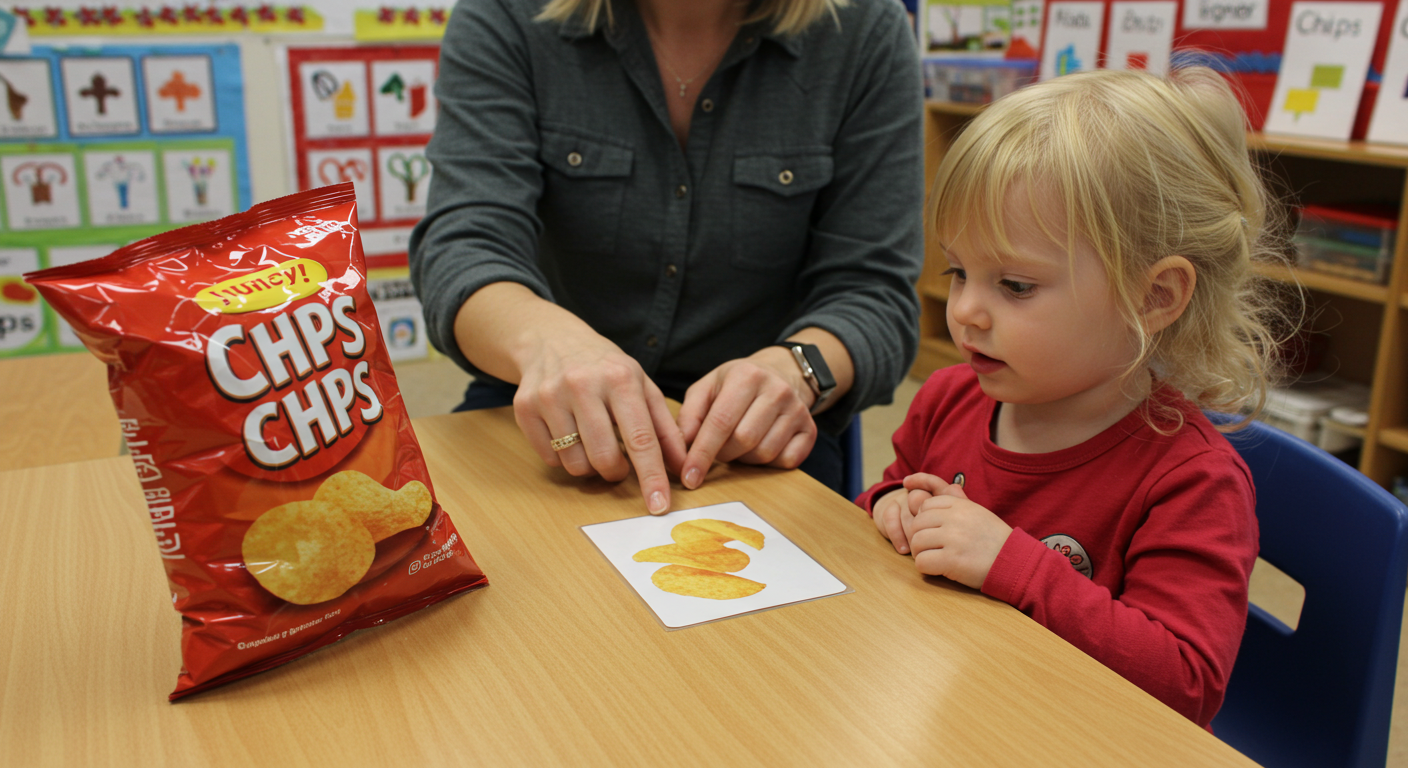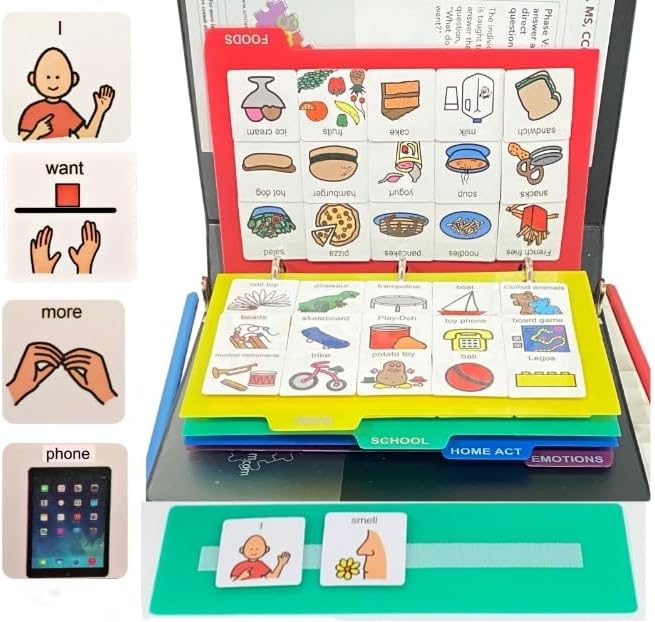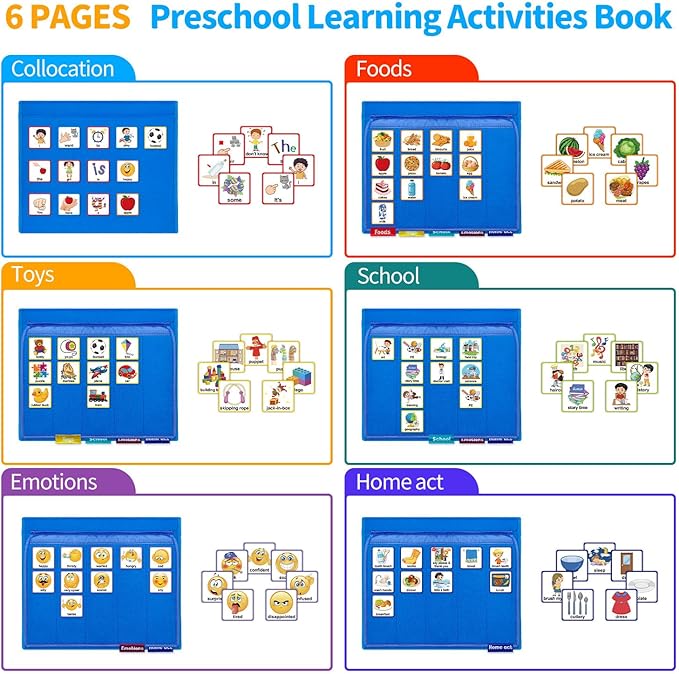How to Use ASD Communication Cards for Children with Autism and Speech Delays
ASD communication cards are an incredibly effective tool for supporting children with autism spectrum disorder (ASD) and other speech or language delays. These visual aids help nonverbal or minimally verbal children communicate their wants and needs, reduce frustration, and encourage more independent behavior throughout daily routines.
Used in speech therapy, special education, and even at home, ASD communication cards are a powerful method for teaching children how to express themselves without relying on spoken words. They offer a consistent, visual method of interaction that supports language development, reduces behavioral issues related to communication challenges, and increases confidence in children who struggle with verbal expression.
#Affiliate link
Why Use ASD Communication Cards?
Children with autism or other developmental delays often struggle with verbal communication. This can lead to significant frustration, tantrums, or withdrawal simply because they cannot express basic needs or feelings. ASD communication cards are designed to bridge this gap by providing a simple, visual alternative to speech.
By using picture-based cards that represent actions, objects, or feelings, children can "speak" by choosing or pointing to a card that conveys what they want. For example, they may show a card with an image of food when they are hungry, or one with a picture of a toilet when they need to use the bathroom. Over time, they learn that communication is meaningful, and this can often encourage the development of verbal language as well.
While these cards are often associated with children on the autism spectrum, they are just as useful for kids with other forms of speech delay, including developmental language disorder, apraxia of speech, or hearing impairments.
Benefits of Visual Communication Tools

ASD communication cards have many advantages beyond simply helping children “speak”:
- Reduces behavioral problems: Many behavioral issues in young children stem from the inability to communicate. Providing a visual system helps minimize meltdowns and frustration.
- Encourages independence: When children can express themselves independently, they rely less on adult cues or prompts. This leads to increased confidence and self-reliance.
- Supports routine and structure: These cards can be used in daily schedules to help children understand what comes next during the day—whether it's brushing teeth, going to school, or playtime.
- Facilitates learning: Visuals help children associate words with objects and actions, which is foundational for speech and language development.
- Promotes social interaction: Communication cards allow children to engage with peers and caregivers, making it easier to participate in group settings.
Real-Life Example: Creating Independence Through Visual Schedules
I personally used ASD communication cards with my own son when he was little and adjusting to a new routine. The cards included simple images representing everyday activities like getting dressed, eating meals, brushing teeth, and cleaning up toys. At first, I needed to guide him through the cards and remind him of each task. Over time, he began to follow the schedule on his own, and I found myself needing to give fewer verbal prompts.
What once required constant reminders became an independent routine for him, simply because he could visually understand what was expected of him. Using these tools not only supported his development but also made our daily life more peaceful and structured.
How to Make Your Own ASD Communication Cards
Creating your own ASD communication cards at home is both affordable and customizable. Here’s a step-by-step guide to get started:
- Choose a Clip Art Program or AI: Use any clip art software or free online image resource to find simple images that represent actions, objects, foods, or emotions. AI is also another amazing resource to create pictures exactly how you want them to be.
- Insert Images into a Table: Open a word processor like Microsoft Word or Google Docs, insert a table, and place each image into a separate cell. Adjust the size so they’re easy for small hands to handle.
- Add Text Labels: Include a word label below each image. This helps reinforce vocabulary and ensures others who use the cards understand the meaning behind each picture.
- Print and Laminate: Print the document and laminate the sheets for durability. Lamination ensures that the cards can be used daily without getting damaged.
- Cut and Add Velcro (Optional): Cut each card into individual squares. You can add Velcro to the back of each card to use them on boards, books, or strips for sentence creation or schedule building.
Making these cards can even be a fun activity to do with your child. Let them pick out their favorite pictures or suggest new ones. This involvement helps them feel ownership over the tool and increases their engagement in using it.
Pre-Made ASD Communication Cards: A Time-Saving Option
If you’re short on time or would prefer a ready-made solution, there are many ASD communication card sets available for purchase. These kits often come professionally printed, laminated, and pre-cut—ready to use right out of the box. Many also include Velcro attachments, communication boards, or sentence strips that allow children to build phrases like "I want juice" or "Go outside."
Some programs also offer customizable software that lets you select your own images, print them at home, and adjust the size or format to meet your specific needs. These can be a great hybrid solution for families who want both convenience and personalization.
#affiliatelink
Using Communication Cards Effectively
Just having the cards isn’t enough—it's essential to model and teach your child how to use them. Start by using the cards consistently throughout the day. For example, before snack time, show the "snack" card and say the word aloud. Then, encourage your child to hand you the card to request the snack. Repeat this process regularly so they begin to make the connection.
Pairing ASD communication cards with structured learning methods, such as discrete trial training (DTT), can be particularly effective. In DTT, each skill is broken down into simple steps and reinforced through repetition. Using cards during this process helps build vocabulary and comprehension faster.
Teaching Children to Use ASD Communication Cards: A Step-by-Step Guide
Step 1: Introducing Basic Requests

Begin by helping your child learn to use ASD communication cards to request items or activities they enjoy. This early stage often works best with the support of two adults—one to guide the child and the other to respond to their communication.
- Find Motivation: Start by identifying what your child is most interested in—such as a favorite toy, snack, or activity. Hold the item up or make it visible without giving it right away.
- Encourage Interaction: Wait for your child to reach for or show interest in the item. Prompt them to pick up the matching communication card and hand it to you as a way of “asking.”
- Immediate Response: As soon as they hand you the card, give them the item right away. The goal is to show that using the card gets them what they want.
- Offer Praise: Reinforce the interaction with encouraging words, such as “You want the car? Great job asking for the car!”
- Model Language: You can also model the word by saying it out loud, like “car,” and encourage your child to try saying it if they’re able.
- Reduce Prompting Gradually: Over time, reduce how much help you give. Move from full prompts (like guiding their hand) to pointing only, until they can use the cards independently.
Avoid asking questions like “What do you want?” or pointing to specific cards. The goal is for your child to initiate communication on their own by reaching for and using the correct card without being directed.
Step 2: Building Independence and Expanding Use
Once your child understands how to request an item using a communication card and can do so without prompting, it's time to make the system more flexible and functional.
- Increase Movement and Effort: Start requiring your child to go a short distance to pick up the communication card or to bring it to the person they are communicating with. This encourages initiative and builds functional independence.
- Use in New Places and with New People: Begin incorporating the cards into other parts of your home, like the kitchen or bedroom, or even at a grandparent’s house. Practice with different people—parents, teachers, siblings, or caregivers—to generalize the skill.
- Add New Vocabulary: Start introducing new cards to represent different items or activities your child enjoys. In the beginning, offer only one card at a time so it’s clear what the choice is. Gradually introduce more variety as your child becomes comfortable.
Step 3: Making Choices Between Multiple Options
After your child is consistently using ASD communication cards independently and in various settings, you can begin helping them make choices from several available options.
- Present Multiple Cards: Offer a small selection of 2 or 3 cards on a visual board or tray. Encourage your child to choose the item they want by picking up the matching card and handing it to you.
- Limit Questions: You might start by saying, “What do you want?” but the goal is to reduce that prompt quickly. The ultimate objective is spontaneous communication, where your child independently selects a card without being asked.
- Adjust as Needed: If your child becomes overwhelmed by too many options, reduce the number of available cards and work back up to more choices over time. The goal is to gradually build the ability to scan and choose from a larger set of options.
Key Tips for Success:
Final Thoughts
ASD communication cards are more than just tools—they are a bridge to understanding, confidence, and connection for children with autism or speech delays. With consistent use and gentle guidance, these simple cards can have a powerful impact on your child’s ability to express themselves and interact with the world around them. Used regularly, these visual tools can unlock a whole new world of interaction for children who otherwise struggle to express themselves.
With patience and commitment, you’ll not only reduce frustration but also empower your child to be a more independent and confident communicator.
If you haven't already, be sure to check out my ebooks, now on Amazon!



